7 days 6 nights
Specific Tour
Unlimited
English
In Ganja city centre, ancient mosques and hammams built during the Safavid era sit side by side with structures left over from the Ganja Khanate and Russian Empire, in addition to eye-catching examples of Socialist Classicism. The city truly brims with history, from the Imamzadeh mosque and mausoleum complex – a key spiritual centre dating back to the 8th century, to the Nizami mausoleum honouring Azerbaijan’s legendary 12th-century poet, to all the charming old red-brick architecture, to the building that briefly hosted the government of Azerbaijan’s first republic (the Azerbaijan Democratic Republic, 1918-1920).
But at the same time, Ganja exudes a distinctly youthful energy, as reflected in the city’s selection as the 2016 European Youth Capital, as well as the several universities located here, and the trendy cafes and art spaces in the central area, not to mention the Ganja State Puppet Theatre, housed in a 19th-century Lutheran church. There are also a few culinary specialties to try, such as Ganja pakhlava, dovga – a traditional yoghurt-based soup, and locally made wines.
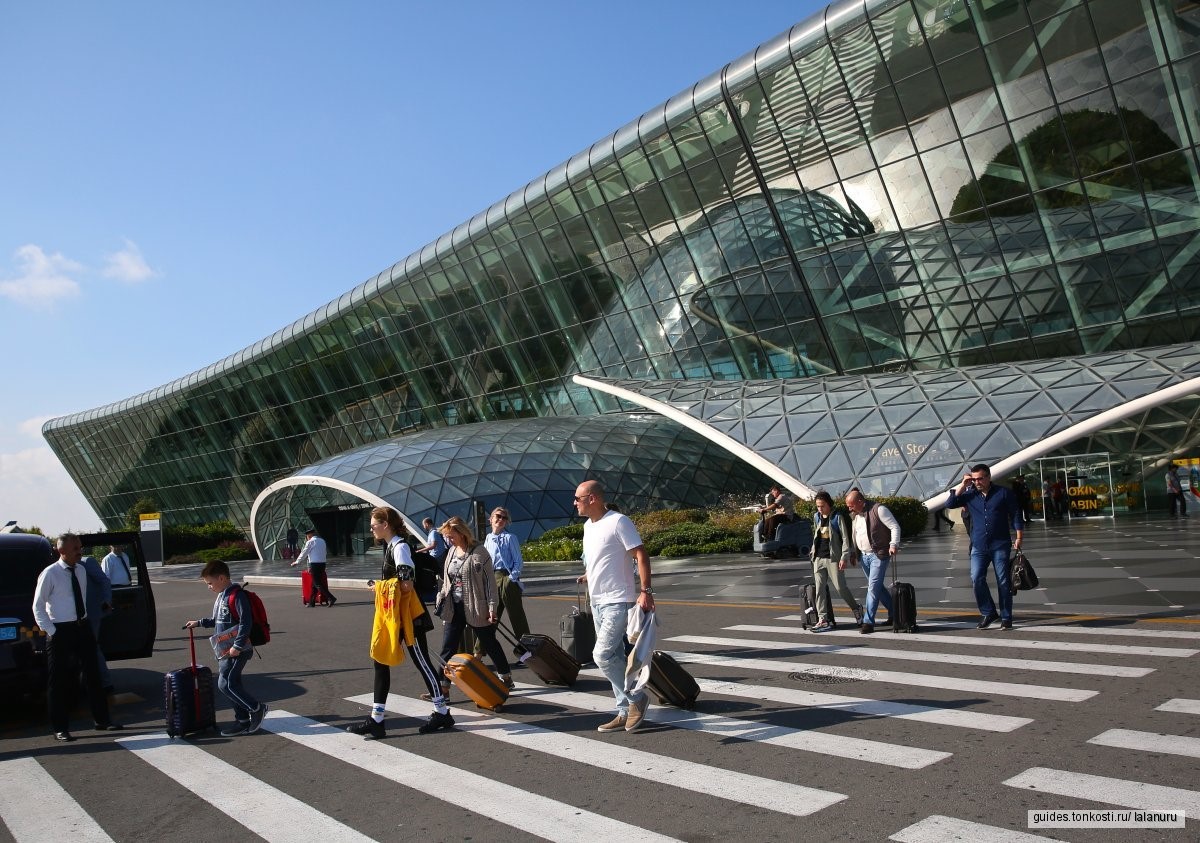
Arrival in Baku, meeting at the Heydar Aliyev International Airport with a professional English - speaking guide. Transfer to the hotel Information about the city and the country on the way to the hotel Check in and hotel accommodation Lunch in the restaurant Free time for leisure Dinner in the restaurant Overnight at the Hotel
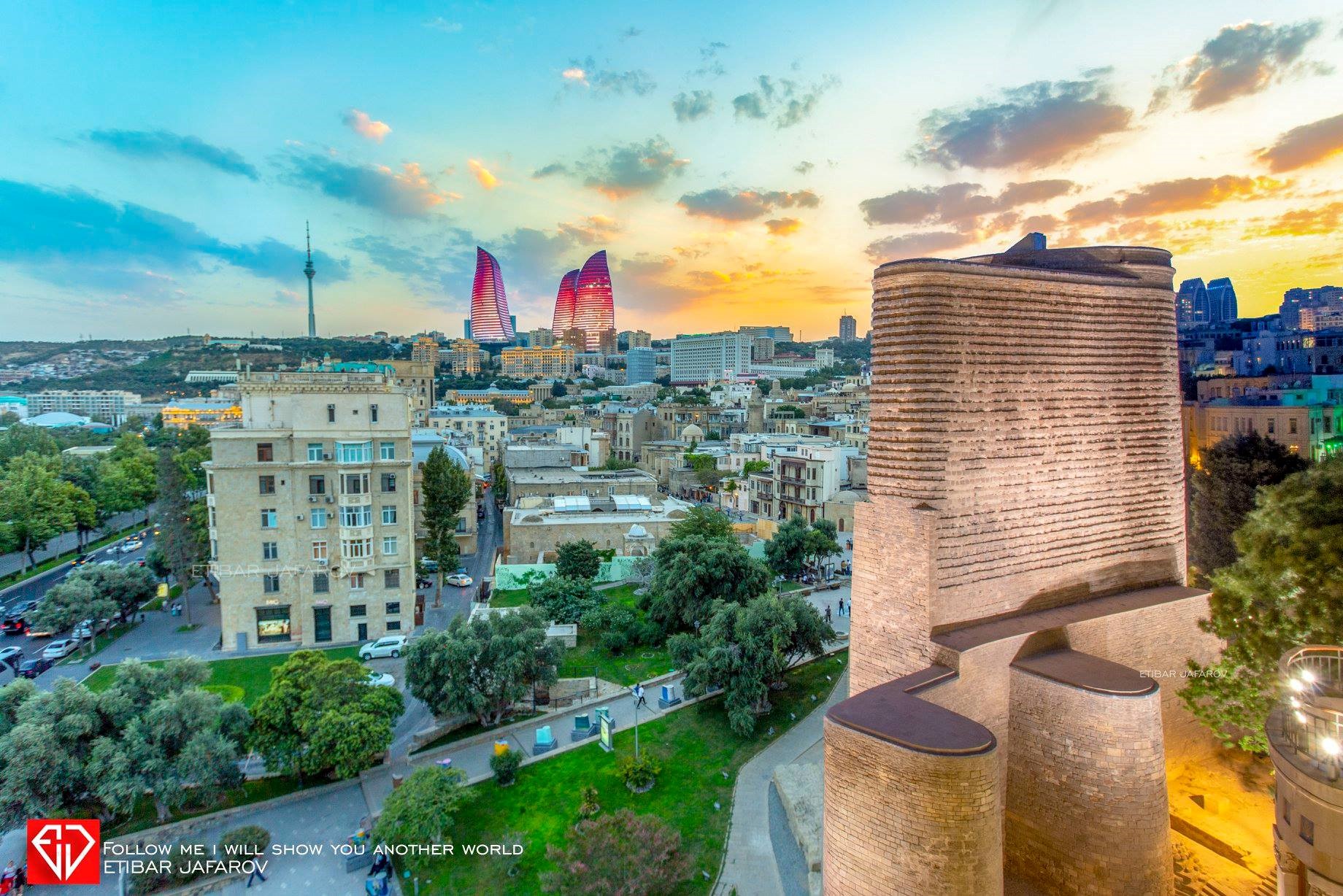
Breakfast in the hotel Walk through the historical part of Old Baku - Icheri Sheher. If the city has an old city, then it has a heart. And it doesn’t matter how the metropolis is built and grows, this little piece of antiquity, like the roots of a tree, contains the entire crown of history. The historical complex includes many architectural monuments that have survived to our times: mosques, towers, churches, squares and other important buildings of the Shah's reign. You will visit: Museum and palace complex of the Shirvanshahs (XV century) Maiden's Tower (XII century) . The Maiden’s Tower is the oldest symbol of the city of Baku. Most scientists believe that the tower was built in two stages: half in the V century, and the upper part in the XII century. But there are versions with dating that hint at the construction of the tower BC. Museum of miniature books. The world's only museum of miniature books is located on one of the streets of the Old City (Icheri Sheher) in Baku. All books are smaller than a palm. The size of many publications is not more than 1 centimeter, and the "area" of the smallest book in the collection is 2x2 millimeters. Workshop of Ali Shamsi. Tourists, walking along Kichik Gala street, have to stop near a 90-year-old tree with three female faces, take a picture with a lion on the facade of the workshop and go through the open door to admire Ali Shamsi's paintings, talk with the master and take a picture with him as a keepsake. Walk along the Seaside Boulevard and a boat trip (depending on weather conditions). Coming to Baku you should definitely visit the Seaside Boulevard. Visitors to the city will find many attractive places here: museums, attractions, parks, cafes, restaurants and much more.The boulevard itself is unusually beautiful and diverse. Its central part amazes with the richness of greenery and flowers, and the steps of the coastal strip end right at the sea water.Visit to the Carpet Museum. It is a sort of fairytale place that promises you a journey in time full of enjoyments. The first charm that grabs the attention is the shape of museum being a rolled carpet on the seaside park.It’s a museum displaying carpet culture of Azerbaijan throughout the centuries. Here you can see mainly carpets, jewelries, traditional clothes and many other crafts, which represent Azerbaijani culture. As Azerbaijan has strong historical background, the carpet culture contains various schools and techniques with variety of motives and ornaments covering all parts of Azerbaijan in a different timeline. Walking through the museum allows traveling across the country as the exhibits in the museum are divided by regions. Apart from that, the structure of museum gives an opportunity of seeing carpets and other exhibits closely. Visit to Highland Park, from where a beautiful view of the city opens. Climbing the stairs higher and higher, you seem to climb the mountain. Your chest is filled with the cool and refreshing air of the highlands, your wings are spread, and you, like a bird, fly over this ancient, majestic city Highland park, well known as ‘’Viewing Square’’, and earlier in Soviet era as ‘’Sergei Kirov park’’ is one of the most favorite places in Baku to have walk, rest, and enjoy the sea view. There you can take rest by breathing fresh air, viewing the city, drinking tea in the Highland Park Café, while listening to the classic lounge music. It’s the best place to relax, that is located right in the heart of Baku. Transfer to the hotel Overnight at the Hotel
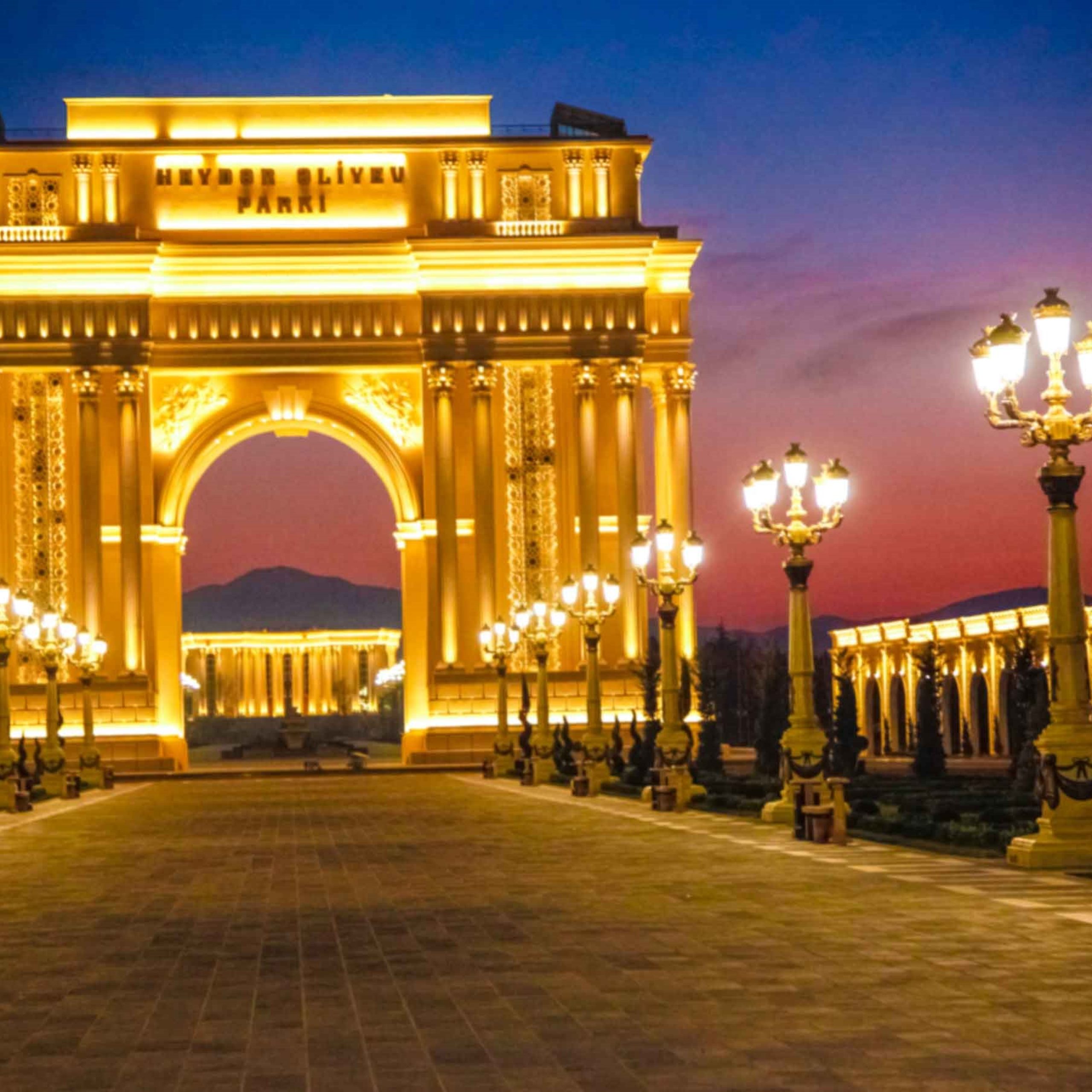
Breakfast in the hotel Meeting at the hotel lobby with a friendly tour guide.Check out from the hotel in Baku Transfer to Ganja. Entrance to the city through the Ganja Gate. Ganja is the second largest city of Azerbaijan, located on the northern slopes of the Lesser Caucasus, about 375 km west of Baku and not far from the border with Georgia. The city is considered the literary and cultural center of the country and is the birthplace of great Azerbaijani poets such as Nizami Ganjavi, the poetess Mahsati Khanim Ganjavi, Mirza Shafi Vazeh. With wide streets and avenues and well thought out parks, Ganja is one of the most beautiful Azerbaijani cities.On the road you can visit the oldest mosque in the South Caucasus – Shamakhi Juma Mosque; Yeddi Gumbez Mosque, the Shirvan Shah's family grave yard. Diri-Baba Mausoleum-Mosque - On the way from Baku to Shamakhi there is Maraza village known for its unique monument - two-storied mausoleum-mosque of the 15th century called Diri-Baba, located across from the old cemetery. For a long time, the local residents have kept the legend that their imperishable Saint Diri-Baba had been buried.On the way, you will have a stop in Shamakhi Juma Mosque that is built-in 743 which is the most ancient known mosque in the Caucasus region. This oldest and largest mosque in Azerbaijan, Shamakhi Dzhuma, according to the legend was built in the 8th century when Shamakhi was chosen as residence by an Arabian caliph. The initial Arabian inscription on the portal of the mosque said that the mosque had constructed in 744. Lunch in the restaurant Check in and hotel accommodation in the hotel in Ganja Starting Ganja City tour Visit Ancient Fortress Wall, Shakh Abbas Mosque with two minarets. Continue to Ganja Caravanserai, the house made of bottles. You will explore the mausoleum of Javad Khan, the last khan of Ganja, Chokek Hamam (medieval bathes), Central Square, Sardar Baghi park, Alexander Nevski Christian Orthodox Church and Christian Temple Agvan Kilsasi. Visiting the Mausoleum of Nizami Ganjavi. The mausoleum of Nizami Ganjavi today is a place of pilgrimage and worship of poets. It is located at the entrance to the city from the south- west side. The mausoleum is a modern monumental construction of a cylindrical form of red granite, hemmed in the manner of semi-circular faces. Below is the entrance to the mausoleum, seeming just tiny against the backdrop of the greatness of the whole building. The name of Nizami is carved in gold right above the entrance. Here, an artificial lake is broken and five fountains are erected, symbolizing the five main poems of Nizami, known as “Khamsa” Visit the Bottle House. The bottle house (Azeri. Butulkalı ev) is an unusual mansion in Ganja, built of glass bottles. The two-storey bottle house was built by a resident of Ganja Ibrahim Jafarov in 1966-1967 from glass bottles of various shapes and sizes and colorful stones brought from Sochi. In the construction used 48,000 bottles. The year of construction of the summer house is indicated on the wall by the porch. The walls of the house were decorated with notes about the Olympic Games, which were held in the USSR in 1980, and there is also the name and portrait of the owner. The words "Ganja" (the historical name of the city) were written indifferent parts of the building, but at that time the city was officially called Kirovabad (1935- 1989).Excursion to the Heydar Aliyev Memorial Museum. The Heydar Aliyev Memorial Museum is a complex executed in a modern style and with a national flavor. The museum building was built in accordance with the architectural monuments of Ganja, i.e. from a red brick and a stone gyulbakht. The main task of the museum is to bring information to the younger generation about the life of the great leader and the promotion of his ideas. The museum, which began its activities in June 2005, contains about 400 exhibits. The main part of the exhibits consists of photographs of Heydar Aliyev and books written about him. The clothing of the great leader, donated to the museum by the Heydar Aliyev Foundation, is one of the most interesting exhibits of the museum. Visit Caravan-Saray Shah Abbas. This caravanserai is part of the historical architectural ensemble created by the architect Sheikh Bahauddin, which also includes the Juma mosque (the mosque of Shah Abbas) and Chekyak-Hamam (medieval bath). According to the tradition of that time, a burnt brick and a mixture of egg white, lime and clay were used in the construction of the building. The two-storey caravanserai building, built in the Oriental style, includes 15 halls and 54 rooms. In the courtyard there are places for pack animals’ merchants. To serve guests in the caravanserai worked as a maid, cooks and musicians.Until recently, the building of the medieval caravanserai played the role of the abode of knowledge - at the end of the 20th century the Ganja Humanities College was located here. Visit the Shah Abbas Mosque. This mosque received another name - “Juma Mosque”, and it was built at the time when Shah Shah Abass ruled. It is listed around 1606, and Sheikh Bahauddin Amil acts as the building designer. The mosque is made of red brick, and it was restored in 2008, and in the process of restoration, the workers found the royal bills that were relevant in those times. They were found in an envelope. Due to the fact that they were found during the restoration, they concluded that the last time repair work took place was in 1910. Juma Mosque is located in the center of Ganja, and it is very close to the Heydar Aliyev Museum. Visit to the Tombs of Jawad Khan. During the period of the USSR In 1962, the grave was destroyed during the reconstruction of the square. During the excavation, the excavator accidentally touches something. Thus, were found the grave and tombstone, which was made of marble. On which there was an inscription in Persian. The mausoleum was built in quadrangular form from baked bricks and covered with a dome in accordance with the style of the Arran school of architecture. The main stone is kept in the Historical Museum of Ethnography in Ganja as a valuable exhibit Dinner in the restaurant Overnight at the Hotel
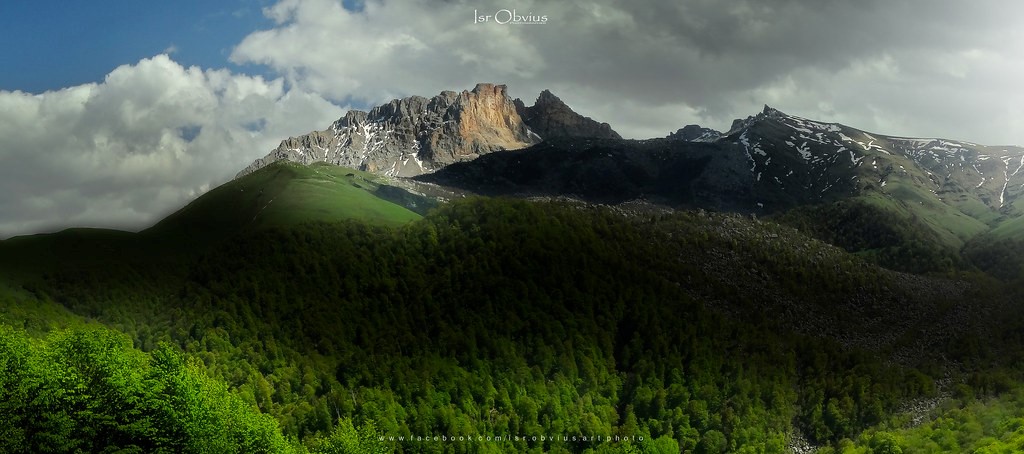
Breakfast in the hotel Meeting at the hotel lobby with a friendly tour guide. Transfer to "Goygol" National Park. Göygöl National Park is a national park of Azerbaijan. It was established on the basis of the former "Goy Gol State Reserve" that was established in 1925 and which it superseded, on a surface area of 12,755 hectares. The national park includes one of the most beautiful and cleanest lakes in Azerbaijan, Lake Göygöl. The reserve is intended to protect the natural ecosystem of the subalpine zones of the northern slopes of the Lesser Caucasus.Visit the Goygol Lake. Lake Goygol rates as Azerbaijan’s most beautiful lake. A 12th-century earthquake created the mountain lake, which sits 1500 metres (4921 feet) above sea level and attracts thousands of local tourists each year. The deep blue lake surrounded by lush forests in the Lower Caucasus Mountains stretches for almost 3 kilometres (1.9 miles). A variety of wildlife, including several species of birds and fish, call the area home too.Visit Hajikand - For the second time this year I am driving up the country lane that wiggles up from the hazy plains south of Azerbaijan’s second city, Ganja heading for the forests of Hajikand. We pass the out-of-place windmill-folly that marks the Helenendorf Restaurant- Hotel then climb through Ashiqli village where aproned women stand at tandir stoves selling egg-yolk yellowed bread rounds and jars of mountain honey. Beyond are woodland glades dotted with small kebab restaurants and many stalls with domed saj-hotplates cooking the local speciality - kətə (kata) - a Ganja-regional term for qutab-style savoury pancakes. Behind Hajikand, the bracing scenery starts to get really spectacular as we around the corner onto a high hillside stretch with Mt Kapaz’s rocky beak making regular appearances on the southern horizon. Lunch in the restaurant Visit Maralgol Lake - The scene at Goygol is undoubtedly beautiful but the area that visitors can explore feels a little restricted. Fortunately, Nabir assures me, the same cannot be said of the slightly smaller lake, Maral Gol, some 7km further up. Apparently, that is more peaceful and arguably more beautiful.Togana - The road beyond Hajikand winds past several well-spaced cafés enjoying the fine mountain panoramas and we stop briefly at a small Albanian chapel-ruin beside a roadside spring. Then a ladder of hairpins spins us down to a village called Toghana (though signs label it Toghanali) at the bottom of a deep cut valley. For many years, Toghana’s series of streamside rest areas and cafés were as far as most travellers could proceed.Mountain Kapaz - The north-facing views from Hajikand are sweeping. But behind Hajikand, the bracing scenery starts to get really spectacular as we around the corner onto a high hillside stretch with Mt Kapaz’s rocky beak making regular appearances on the southern horizon. These views have long been incentive enough for visitors to come this way, but now if all goes well there is a greater prize across the valley. Dinner in the restaurant Back to Ganja Overnight at the Hotel
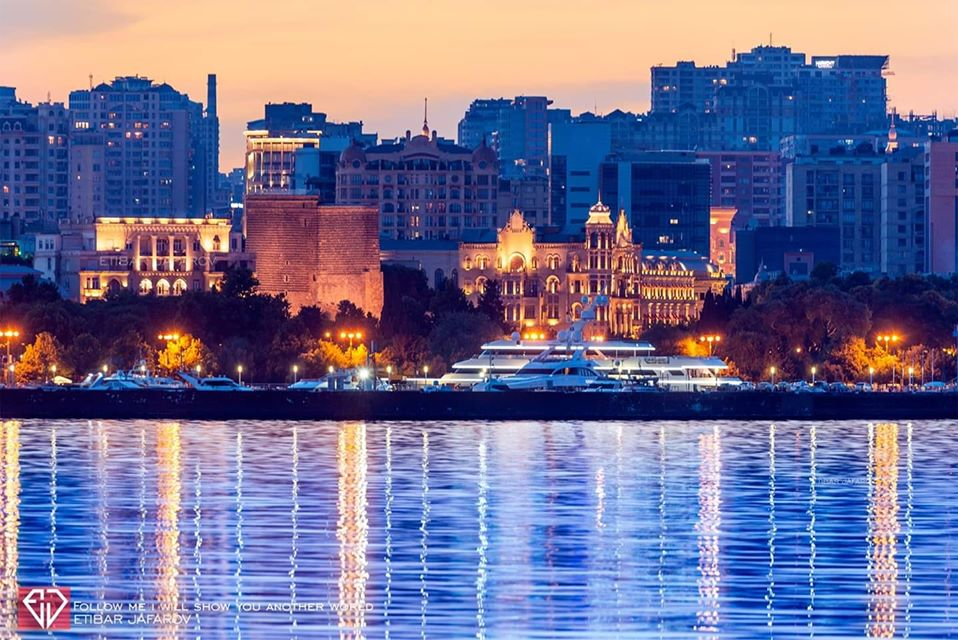
Breakfast in the hotel Meeting at the hotel lobby with a friendly tour guide. Check out from the hotel in Ganja Transfer to Baku Check in and Baku hotel accommodation Lunch in the restaurant Free time for leisure Dinner in the restaurant Overnight at the Hotel
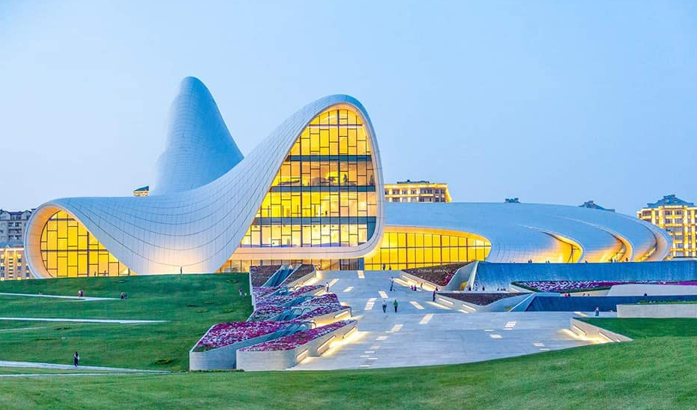
Breakfast at the hotel Starting Absheron tour Absheron tour covers three historical places. You will get an opportunity to become acquainted with old household and ethnographic traditions at Gala open-air museum. During the tour you will see Quadranqular Tower, one of the ancient Absheron towers located in Mardakan village. Moreover, you will also learn legends about Ateshgah Temple and Burning Mountain and the streams located nearby. Firstly, to Atesgah (Fire Temple) it is the first main settlement of worshippers in Azerbaijan since the second century. Ateshgah often called the "Fire Temple of Baku" is a castle-like religious temple in Surakhani town, a suburb of Baku, Azerbaijan. Based on Persian and Indian inscriptions, the temple was used as a Hindu, Sikh, and Zoroastrian place of worship. Ateshgah – is temple of fire exotic of Azerbaijan. It is known almost all over the world. It is situated 30 km away from Baku, in Surakhani district. This territory is well known with it is phenomen - natural gas which comes from ground and and burns. The temple was built in XVII-XVIII centuries. It was built by a Hindu community in Baku, belonging to the Sikh caste. But the history of Ateshgah is more ancient. Long ago in this territory was located the sanctuary of Zoroastrians - fire worshipers (approximately the beginning of our era). Lastly, we will visit: Yanar Dag (Azerbaijani: Yanar Dağ, meaning "burning mountain") Fire mountain — is one of the most incredible natural sightseeings of Absheron peninsula. This is a mountain hill which is impossible to put out neither with rain nor with sand. And it is several thousand years that it burns. The frightening and simultaneously mesmerizing fiery landscape are actually explained very simply: From the upper layers of the soil natural gas is released, and when it comes into contact with oxygen, it turns into a flame.Trip to “Fire Mountain “- “Yanardag” – (25 km from Fire Temple) is a mountain on Absheron peninsula, 25 km from north of Baku. Literally, word “Yanardag” means “Blazing mountain”. Blazing bodies of flame dance on stones and floor. Yanar dag is a natural gas fire which blazes continuously on a hillside on the Absheron Peninsula on the Caspian Sea near Baku, the capital of Azerbaijan, which itself is known as the “land of fire.” Lunch in restaurant Visiting Heydar Aliyev Center Heydar Aliyev Center is considered as is one of the main attractions for tourists and has also become a symbol of modern Azerbaijan and modern Baku. The iconic Heydar Aliyev Centre was designed by Iraqi-British architect Zaha Hadid and is famous for its distinctive flowing, curved style that eschews sharp angles. As a brilliant piece of post-modern architecture, the building’s shape is an eternal cycle, connecting the past with the present. The building houses a conference hall, gallery halls, museums and more and seeks to unite people of diverse backgrounds in a place of shared ideas. The building won the London Design Museum award in 2014. Dinner in the restaurant Back to the Hotel
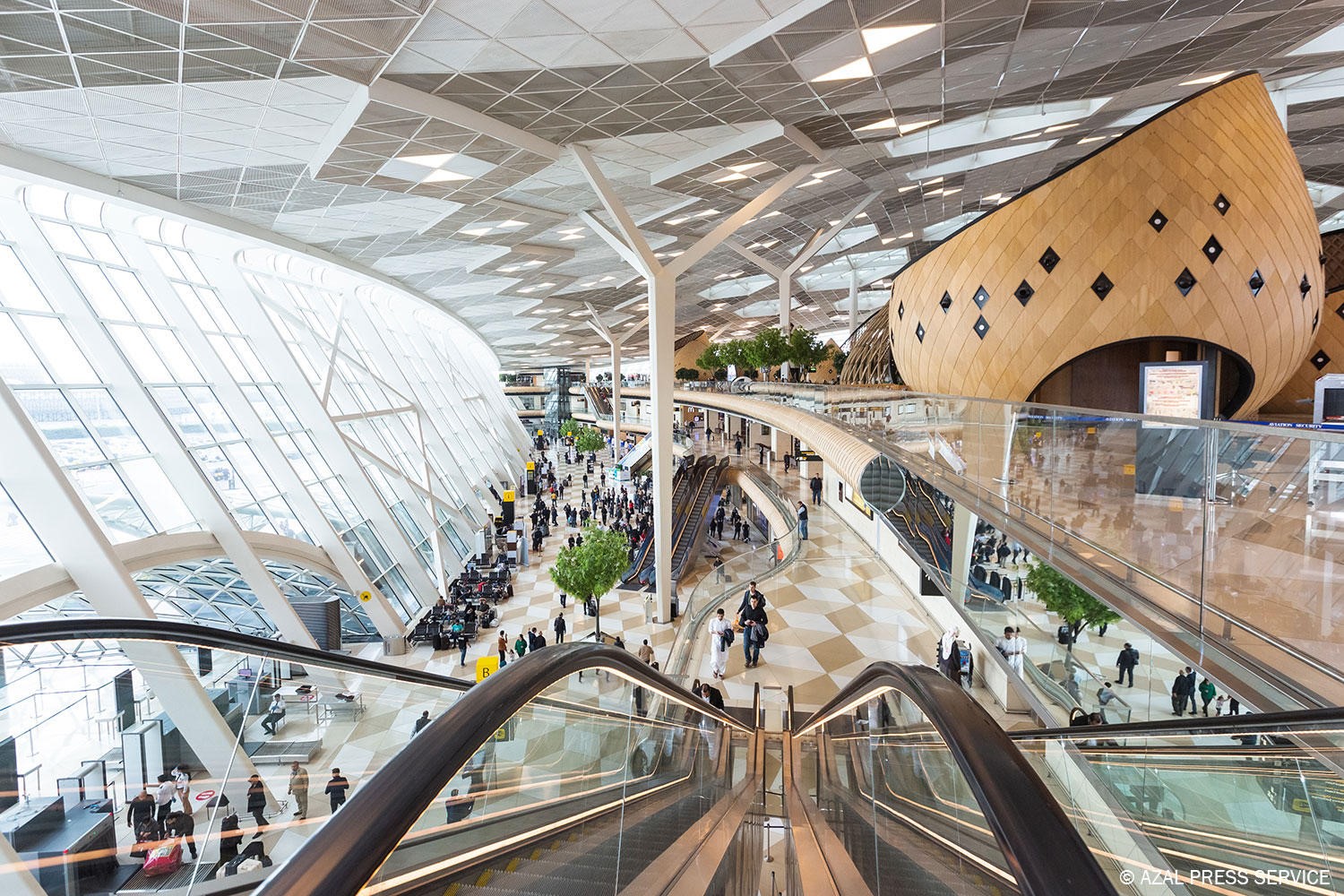
Breakfast in the hotel Departure from the hotel Airport transfer During the trip
Contrary to popular belief, Lorem Ipsum is not simply random text. It has roots in a piece of classical Latin literature from 45 BC, making it over 2000 years old. Richard McClintock, a Latin professor at Hampden-Sydney College in Virginia, looked up one of the more obscure Latin words, consectetur, from a Lorem Ipsum passage, and going through the cites of the word in classical literature, discovered the undoubtable source.